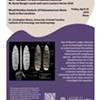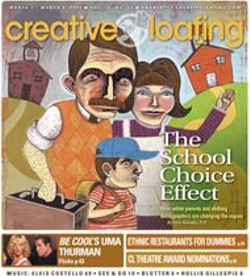School Choice Consequences
How white parents and shifting demographics are changing the region
Page 2 of 4
With schools, the move toward the tipping point usually doesn't start with racial discomfort, but rather with a general perception that a school system is somehow inferior. Because middle and upper-middle class whites are typically the first to bypass the system in favor of private schools or public schools in surrounding counties, the system becomes increasingly populated by minority students, and increasingly low-income. At around 50 percent white, race increasingly begins to drive the abandonment of a public school system.
It becomes something of a self-fulfilling prophecy, said Charles Gallagher, an assistant professor of sociology at Georgia State University who studies race and ethnic relations.
"The presence of a sizable minority population then becomes a proxy for the quality of the schools," said Gallagher.
While sociologists agree that there is no precise mathematical tipping point, at somewhere near a 50-50 racial mix, the "tipping" accelerates and the ratio of one race to the other begins changing more rapidly.
That's exactly what appears to be happening in Charlotte-Mecklenburg, says Christine Rossell, a Boston University professor and school desegregation expert. A decade ago, 54 percent of CMS students were white. In 2000, when CMS hit the tipping point, whites made up roughly half of the public school population.
Today, a mere five years later, they make up just 39 percent.
This phenomenon would perhaps have raised more red flags along the way with local leaders if total white enrollment in our school system was declining significantly, but it's not. CMS has just 307 fewer white students today than it did a decade ago, hardly a large-scale retreat in terms of raw numbers. In fact, the number of white students has hovered around 47,000 for most of the last decade.
What is very new, but has received scant official attention in terms of its effect on CMS, is the growth in the number of white students in surrounding counties. During the last five years, while white growth at CMS stagnated, the surrounding counties — in particular Union and Cabarrus as well as York County, SC — added 10,000 additional white students to their school rolls.
And that's not the only demographic change that has been largely ignored: the county public school system has also seen a very large in-migration of minority students. While white enrollment stayed flat, an additional 15,000 African-American children and 11,000 Hispanic children enrolled in Charlotte-Mecklenburg Schools over the past decade. At 43 percent, African-American children are now the largest student group in Charlotte-Mecklenburg.
According to David Armor, a research professor at the Institute of Public Policy at George Mason University, it appears that white parents who are moving to this region with school age children are increasingly choosing to live outside Mecklenburg County, while African-Americans and Hispanics are settling down inside the county. With half the residential growth in the six-county region now occurring outside Mecklenburg, the trend is likely to accelerate over the next decade.
On top of all that, white parents who live in Mecklenburg County are increasingly choosing charter, private or home schooling, which has also taken its toll on diversity in public schools. In 1990, 83 percent of white school age children who lived in the county attended Charlotte-Mecklenburg Schools. By 2000, only 70 percent did. In contrast, 98 percent of African-American and Hispanic school age children here attend public schools.
For Boston University's Rossell, many of these trends are familiar ones that have been the prelude to white abandonment in urban systems across the nation for decades. Unless the school system does something radical and does it now, she says, it will soon start losing the white kids it still has.
Once that happens, says University of Georgia's Dr. Doug Bachtel, black middle class families will likely begin to abandon the system as well, leaving behind higher and higher concentrations of low-income kids.
Given all these combustible trends, it's no wonder the school system is facing mutiny from both black and white parents' groups who've made news lately with threats of lawsuits and/or secession from the school system. Experts we spoke with agree that these are some of the classic signs that the system is "tipping."
"Charlotte is repeating what has happened in every large metropolitan area in the Northeast," said Gallagher. From here on out, he said, perceptions about local schools will increasingly be a key factor, if not the key factor, in the real estate decisions made by parents of school-age children.
"New homebuyers," said Gallagher, "even those that wanted the cultural amenities being close to the city would provide, are doing this calculus about how if they move into the city, they're going to have to pay for private schools, but if they move to one of the surrounding counties, you typically get better, more affordable housing."
Latest in Cover
Calendar
-

NEW WINDOW GALLERY-Pat Rhea-ACRYLIC PAINTINGS-April 05-30 2024 VALDESE, NC 28690 @ New Window Gallery/Play It Again Records
- Through April 30, 12 p.m.
-

TheDiscountCodes
-

"Blood Residue Analysis of Paleoamerican Stone Tools in the Carolinas" @ Native American Studies Center
- Fri., April 26, 12-1 p.m.
-

Brightfire Music and Arts Festival @ GreenLife Family Farms
-

ARTS RENAISSANCE, a GALA supporting the ARTS in South Carolina @ the Columbia Museum of ART
-
5 Online Player Communities to Join in Michigan
-
A beginners guide to online sports betting in the US
-
I Changed my Sex. Now What?
Scott Turner Schofield's rapid transit to a new identity










